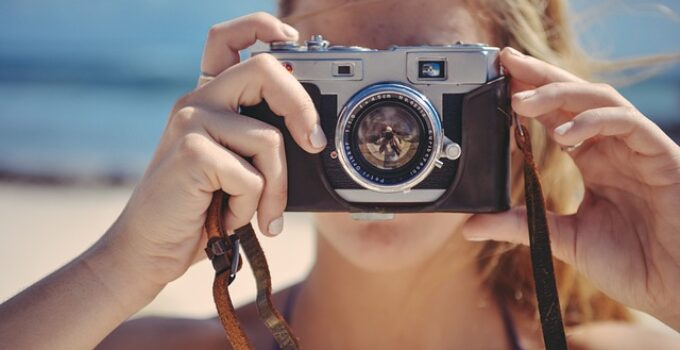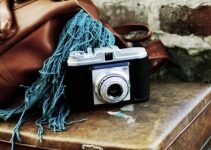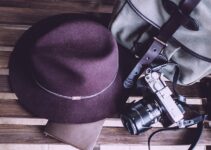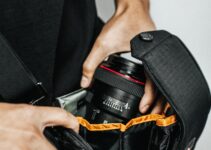If you enjoy outdoor photography, waterproofing your camera is a crucial skill. While high-end cameras may come with water-resistant capabilities, using a plastic bag to protect your camera from water damage can be an effective and inexpensive solution.
Start by selecting a high-quality plastic bag that is large enough to accommodate your camera and lens. Next, create a small hole in the bottom of the bag and insert the lens.
Secure the bag around the camera body using rubber bands or tape, and cut off any excess plastic to ensure a snug fit.
With these simple steps, you can protect your camera and continue to capture beautiful images even in wet and rainy conditions.
Can you waterproof your camera?
Yes, it is possible to waterproof your camera. You can purchase a waterproof camera or a camera housing specifically designed to protect your camera from water.
You can also use a variety of methods to waterproof your camera temporarily, such as using a plastic bag or waterproof case.
It is important to remember that while these methods can protect your camera from water to some extent, they are not guaranteed solutions, and it is always best to exercise caution when exposing your camera to water.
15 steps to waterproof your camera with a plastic bag
Waterproofing a camera with a plastic bag can be a temporary solution for situations where you need to protect your camera from water.
Here are the 15 steps to follow:
- Find a suitable plastic bag that can fit your camera.
- Ensure that the plastic bag is clean and free from any sharp objects or debris that may damage your camera.
- Cut a small hole at the bottom of the plastic bag for the camera lens to protrude.
- Stretch the opening of the bag over the lens of the camera.
- Seal the bag around the lens with a rubber band or tape, ensuring that it is tight enough to prevent water from entering.
- Take care to ensure that the lens is not obstructed by the bag and is still able to take clear photos.
- Turn off the camera before inserting it into the bag.
- Open the bag and place the camera inside.
- Remove any air pockets inside the bag to prevent the bag from sticking to the camera.
- Ensure that the camera is positioned correctly inside the bag and that it is secure.
- Fold the open end of the bag over the camera body, creating a seal.
- Secure the folded end with a rubber band or tape to prevent water from entering.
- Check that the bag is completely sealed and that no part of the camera is exposed.
- Test the camera in a safe environment, such as a sink or bathtub, to ensure that the bag is fully waterproof.
- After use, remove the camera from the bag and dry it off completely before removing the bag.
Note: While a plastic bag can protect your camera from water, it is not a guaranteed solution and may not be suitable for prolonged underwater use.
For extended underwater photography, it is recommended to invest in a dedicated waterproof camera housing.
How to waterproof your camera with a plastic bag?
Now here is the second step. Take a look at the steps to waterproof your camera with a plastic bag in 5 simple steps:

- Find a plastic bag that is large enough to fit your camera.
- Cut a small hole in the bag for the lens to protrude.
- Stretch the opening of the bag over the lens, making sure it fits snugly.
- Secure the bag around the lens with a rubber band or tape to prevent water from entering.
- Test the camera safely to ensure the bag is fully waterproof.
Remember, while this method can protect your camera from water, it is not a guaranteed solution and may not be suitable for prolonged underwater use.
Investing in a dedicated waterproof camera housing is recommended for extended underwater photography.
Yes, it is generally okay to store a camera in a bag. In fact, it is recommended to store your camera in a bag when not in use to protect it from dust, scratches, and other potential damage.
However, it is important to use a bag that is appropriate for your camera and that provides adequate protection.
Ideally, you should use a padded camera bag that is specifically designed to hold and protect cameras and lenses.
These bags usually have compartments that can be customized to fit your gear and prevent it from moving inside the bag. Some bags also have additional features like water resistance, which can protect your gear from moisture and other environmental factors.
If you don’t have a camera bag, you can also use a general-purpose bag or backpack, but make sure to pad your camera with a soft cloth or protective case to prevent damage from bumps and another impact.
Additionally, make sure to store your camera in a dry and cool place, away from direct sunlight or extreme temperatures, to prevent damage to the camera’s internal components.
Conclusion:
In conclusion, waterproofing your camera with a plastic bag is a simple and cost-effective way to protect your camera from water damage. It can be especially useful in emergency situations or for occasional outdoor photography in wet conditions.







